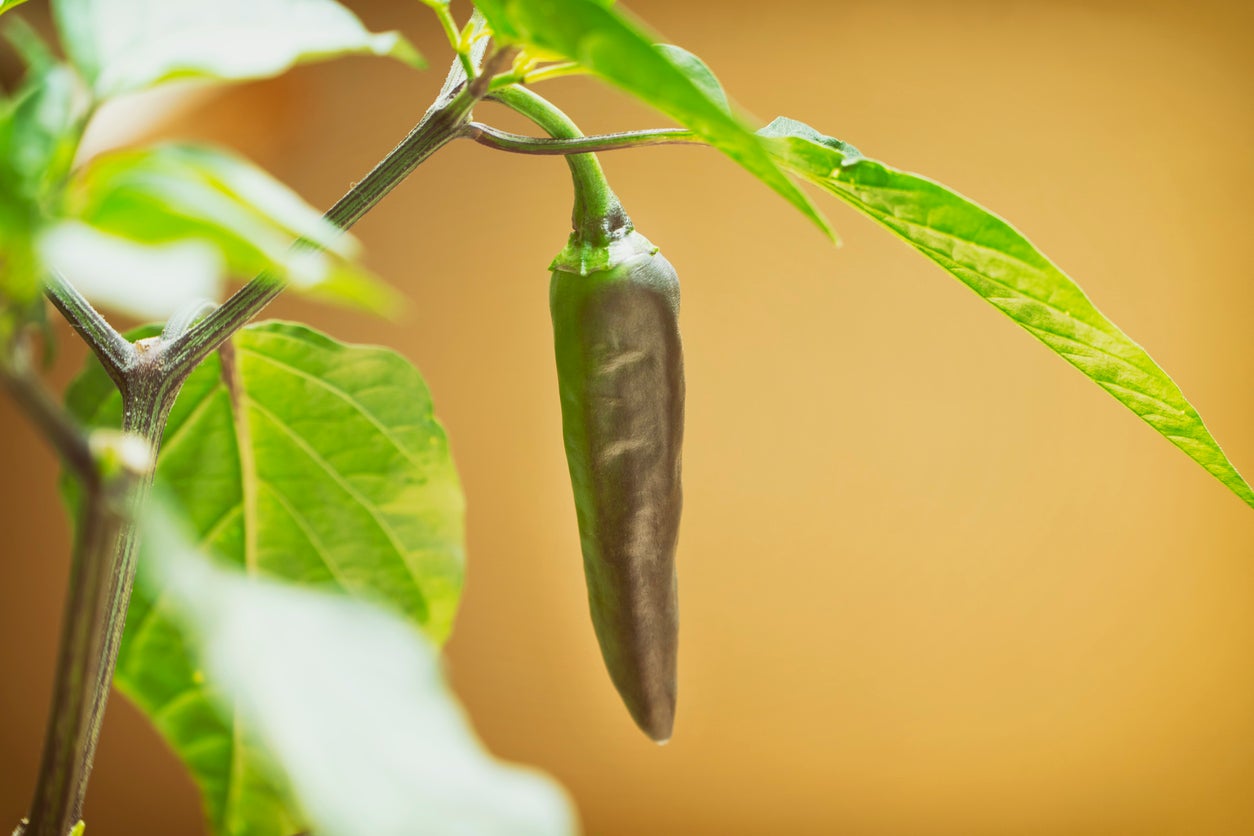Indoor Pepper Care: Growing Hot Pepper Plants Inside


Are you looking for an unusual houseplant for your country décor? Maybe something for the kitchen, or even a pretty plant to include with an indoor herb garden tray? Consider growing hot peppers indoors as houseplants. These are great specimens for the situations mentioned.
Growing Hot Peppers Indoors
Foliage of ornamental hot pepper plants is attractive, peppers are ornamental, and they grow fairly well indoors. Of course, take advantage of warm, sunny days to give them that extra boost by putting them outside for a few hours.
Ornamental pepper is possibly the best hot pepper to grow indoors. Fruits are green, yellow, orange, and finally red. You may use them in cooking, but they are extremely hot. If you’re looking for a pepper plant to use regularly, try growing the colorful cayenne ‘Carnivale’ in a pot. Really, any hot pepper type will work well but stick with compact varieties, as these adapt better to containers.
You may start seeds of peppers in clean containers or purchase seedlings or small plants to grow indoors. Transplant into a permanent container. When growing small plants or seedlings, provide 10 to 12 hours of sunlight per day or locate plants 6 inches (15 cm.) under a grow light 14 to 16 hours.
When starting from seed, you may use a warming mat to sprout seeds. Start seeds in a warm spot out of direct sunlight and keep the soil moist. A plastic covering helps hold moisture. Increase sunlight as seedlings sprout. Proper lighting is essential to keep pepper plants from growing spindly when reaching for light.
Indoor Pepper Care
Care for hot peppers in pots will include turning the pots as seedlings lean toward the light. This won’t be needed if seedlings are directly under an artificial light. Pinch the first flowers down to the stem to encourage heavier fruit set. Only pinch the first few blooms so as not to interrupt the 70-day growing cycle. Flowers are perfect, meaning each one is both male and female, so they self-pollinate.
Indoor pepper care includes watering a couple times a week. Let the soil dry out between watering. Check down a couple of inches (5 cm.) with your forefinger before watering to make sure the soil is dry or use a moisture meter.
Gardening tips, videos, info and more delivered right to your inbox!
Sign up for the Gardening Know How newsletter today and receive a free copy of our e-book "How to Grow Delicious Tomatoes".
Fertilization is also an important step for the most attractive indoor pepper plant. Sources advise fertilization with fish emulsion or compost tea. You may also use a houseplant fertilizer diluted to half strength.
Keep an eye out for pests. They are rare on pepper plants, especially those grown indoors, but occasionally attack if they have a chance. If you see aphids hovering near new growth, use a soapy spray to get rid of them. Fungus gnats are often a sign that soil is too wet. Decrease watering to stop attracting them.

Becca Badgett was a regular contributor to Gardening Know How for ten years. Co-author of the book How to Grow an EMERGENCY Garden, Becca specializes in succulent and cactus gardening.
-
 Types Of Tomatoes Explained: Explore The Many Wonderful Shapes, Colors, Flavors, & Best Uses
Types Of Tomatoes Explained: Explore The Many Wonderful Shapes, Colors, Flavors, & Best UsesThe world of tomato varieties is vast and fascinating. Learn about the key types to grow in your garden, tailored to your preferences and space.
By Amy Grant
-
 Try The Trend – Turn Any Bed Into A Keyhole Garden With This Clever In-Ground Composter
Try The Trend – Turn Any Bed Into A Keyhole Garden With This Clever In-Ground ComposterKeyhole gardening is an efficient and sustainable practice that saves space. Get started on this DIY project quickly and easily with an in-ground composter.
By Bonnie L. Grant